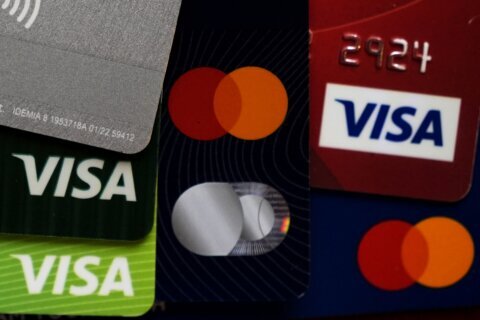If you’re like a lot of people, right now you’re making a resolution to kill off your credit card debt.
Maybe you’re experiencing a holiday spending hangover. Or you’re looking forward to a new, hopefully wonderful year — but don’t want the daily reminder in the form of credit card interest that not everything about your life is so wonderful.
In any case, killing off credit card debt in a year is a little like a game. A not-so-fun game, but one that requires a lot of strategy.
[See: What to Do If You’ve Fallen (Way) Behind on Your Credit Card Payments.]
Snowball versus avalanche method. Generally, there are two methods of paying off debt that most experts recommend.
There’s the snowball method, in which you pay the minimum payments on all of your credit card debts except the one with the lowest balance. On that one, you throw as much money as you can afford toward it, until it’s paid off. Once that is paid off, you take the money you were putting toward that credit card and then shovel it toward the next credit card with the next lowest balance. And so on.
With the avalanche method, you’re putting all of your focus on the debt with the highest interest rate. You make sure you pay the monthly minimum payment on all of the credit cards, but the one with the highest interest rate, that’s what you attack. You put as much extra money as you can give to that credit card. When that’s paid off, then you focus on killing the next card with the highest interest rate.
“Mathematically, it’s more effective to pay the account with the highest interest rate first,” says Rob Drury, executive director of the Association of Christian Financial Advisors, based out of San Antonio.
But Drury says the main thing you need to remember is, “Do whichever works and feels the best, and don’t quit until the debt is gone.”
And if you just have one card but a ton of money owed on it? Well, that brings us to the next point.
[See: 11 Money Moves to Make Before You Turn 40.]
Pay more than the monthly minimum. Really, any system for paying down your credit card debt is perfectly plausible and responsible as long as you’re paying more than the monthly minimum on at least one credit card. If you want to pay your cards in a random fashion, doubling monthly payments on each or all of them, or if you pay them off in alphabetical order, as long as you’re paying more than the minimum on at least one card, then you have nothing to worry about. If you only have one credit card to pay off, all the better.
But not consistently paying the monthly minimum is going to ensure that you stay in debt.
For instance, let’s say you have a $5,000 credit card bill with an 18 percent APR, and your minimum payment is $125 a month. If you only make the monthly minimum payment, it’ll take you 62 months (a little over five years) to get the card paid off — and you’ll pay over $2,693 in interest. If you double your monthly payment to $250, however, you’ll pay less than $1,000 in interest, and you’d be debt-free in only two years. If you wanted to pay it off by the end of one year, you’d have to cough up $460 a month.
Look for balance transfer cards. Granted, if you have a lot of revolving credit card debt, there’s probably a decent chance your credit isn’t good enough to get another credit card. But everyone’s financial situation is different, and if you do still have good credit, you may want to give this a shot.
Sarah Hollenbeck, a marketing and PR associate at the retail website Offers.com, suggests looking for a card with a zero percent balance transfer offer.
“The good ones will let you defray interest charges for a year or more,” she said, adding: “For this to work, you’ll still need to pay down your debt aggressively, because zero percent offers are like ticking time bombs. If you don’t pay your debt off by the end of the offer period, interest will be back with a vengeance. But these offers will buy you time and can help you make sure every cent you pay will reduce your debt rather than going toward interest charges.”
Make multiple payments to your credit card each month. This is another suggestion from Hollenbeck.
“It’s better to make payments throughout the month than to wait until the end to make a single payment,” she said.
On the other hand, if you can make the big payment at the beginning of the month, that would be fine, too. The main thing is, there’s compound interest accruing daily, so if you pay off the debt earlier rather than right before the deadline, you’re shrinking your balance and paying less in interest.
[See: How to Talk to Millennials About Money.]
Don’t add debt while you’re paying it off. This is probably self-evident and self-explanatory, but it’s crucial to remember, said Brenda Eichelberger, an instructor of management and finance at the School of Business at Portland State University in Portland, Oregon.
“Stop accruing debt during this time, and if possible, increase your income,” she said.
Her advice for landing side gigs may not be practical for everyone, like the time-starved single parent with three kids, but she offered a few quick, relatively painless, ways to earn money, like dog watching or baby-sitting.
“One of my students put up a shower curtain, rented his bed in Brooklyn [a neighborhood in Portland] and slept on the couch,” Eichelberger said.
Don’t get too carried away with paying off the debt. Drury recommended making the goal of credit card debt elimination as something you budget for every month, just the way you would a car or phone bill payment. So if you decide you should pay $350 a month toward credit card debt, stick to that. A little extra one month may not hurt, but if you impulsively pay $700 in a particular month, that could backfire later, where you find yourself struggling to make it to your next paycheck.
In other words, you only can consider yourself successful with killing your credit card debt by the end of the year if you’ve done so without destroying everything else in your life. You want to wipe out the debt without suffering a wipeout. If you’re debt-free at the end of the year — but you’ve developed scurvy from malnutrition, or your car has been repossessed — you really haven’t won the game.
More from U.S. News
8 Financial Steps to Take After Paying Off a Debt
25 Ways to Fix Your Finances Fast
How to Wipe Out Your Credit Card Debt by the End of 2018 originally appeared on usnews.com







